Download a copy of the TOP Report - Toronto Workforce Innovation ...
Download a copy of the TOP Report - Toronto Workforce Innovation ...
Download a copy of the TOP Report - Toronto Workforce Innovation ...
Create successful ePaper yourself
Turn your PDF publications into a flip-book with our unique Google optimized e-Paper software.
The need for new homes has resulted in more interest in “green construction” and <strong>the</strong> number <strong>of</strong><br />
buildings that meet LEED (Leading Environmental Efficiency Design) Gold Standard certification<br />
jumped from April 2011 to March 2012 by 88%. <strong>Toronto</strong> is Canada’s leading city in constructing<br />
LEED-certified buildings.<br />
The city has almost completely recovered from <strong>the</strong> global economic downturn <strong>of</strong> 2008–2009, and<br />
some sectors are now flourishing. <strong>Toronto</strong>’s film, television and commercial production sector is<br />
working close to its peak <strong>of</strong> 2001, contributing, with <strong>the</strong> digital media sector, more than $1.13<br />
billion to <strong>Toronto</strong>’s economy. ii<br />
<strong>Toronto</strong> is <strong>the</strong> home <strong>of</strong> over 74,600 business establishments, 3,400 new business establishments in<br />
2012. The Office sector continues to take precedence, with 40.6% <strong>of</strong> all new establishments, comprised<br />
primarily <strong>of</strong> law <strong>of</strong>fices, parole/security services, and health service practitioners. The Service and<br />
Retail sectors were also well represented, comprising 26.7% and 18.6% <strong>of</strong> new establishments<br />
respectively. iii<br />
<strong>Toronto</strong> has 40% more knowledge workers than <strong>the</strong> rest <strong>of</strong> Ontario, leading to a rapid expansion <strong>of</strong><br />
<strong>the</strong> knowledge-sector. iv This expansion, however, has not kept pace with <strong>the</strong> demand for <strong>the</strong>se jobs.<br />
The growth <strong>of</strong> knowledge-based work has led to a decrease in middle jobs (those that typically do not<br />
require a post-secondary degree but do require some skill), causing a polarization <strong>of</strong> <strong>the</strong> workforce. v<br />
While some parts <strong>of</strong> <strong>the</strong> city flourish, o<strong>the</strong>rs continue to experience hardship. According to 2012<br />
<strong>Toronto</strong>’s Vital Signs® <strong>Report</strong>, <strong>Toronto</strong> is <strong>the</strong> least equitable urban centre in Canada, <strong>the</strong> only<br />
metropolitan area to receive a “C” grade on income distribution from <strong>the</strong> Board <strong>of</strong> Trade’s Scorecard<br />
on Prosperity. Our ranking among 24 global centres has slipped to 16th place, reflecting growing<br />
income inequality, increasing precarity 1 and rising numbers <strong>of</strong> <strong>the</strong> “working poor”.<br />
FORMS OF EMPLOYMENT IN THE GTA-HAMILTON LABOUR MARKET 2011:<br />
AGES 25-65<br />
% working in: GTA City <strong>of</strong> Hamilton Halton Peel York<br />
Hamilton <strong>Toronto</strong><br />
Region<br />
Standard 50.3 49.4 47.1 57.5 52.8 48.0<br />
employment<br />
relationship<br />
Permanent 8.8 9.0 12.3 8.0 8.0 7.1<br />
part-time<br />
Precarious 18.4 19.4 15.2 18.0 17.0 21.0<br />
employment<br />
O<strong>the</strong>r employment 22.5 22.2 25.4 16.5 22.2 23.9<br />
forms<br />
Local Labour Market Update 2013 • <strong>Toronto</strong>’s Opportunities and Priorities<br />
5


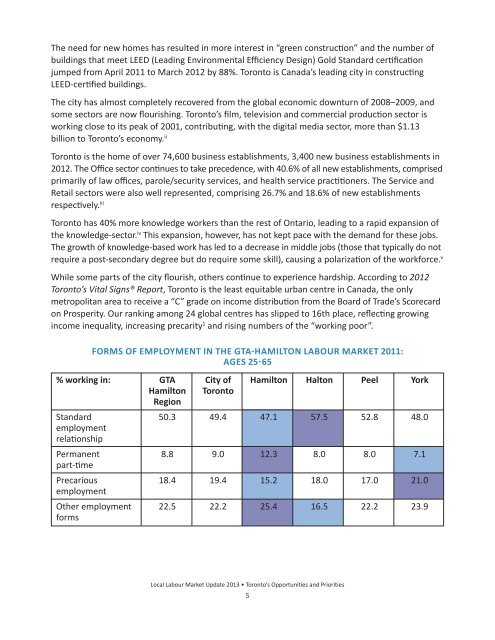
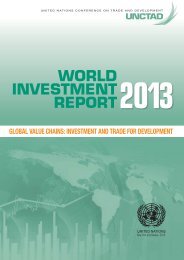



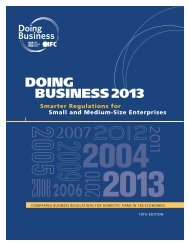




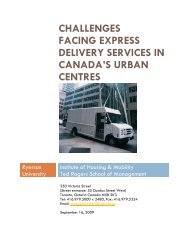

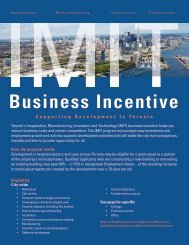

![Creative City Planning Framework [PDF] - City of Toronto](https://img.yumpu.com/24270607/1/190x245/creative-city-planning-framework-pdf-city-of-toronto.jpg?quality=85)